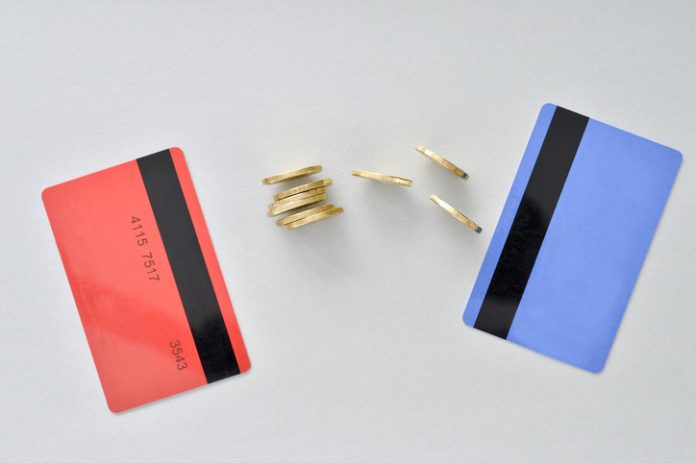If you’re carrying high-interest credit card debt, the idea of paying less or even no interest can sound like a dream come true. Balance transfer cards offer exactly that: the ability to transfer your existing credit card debt to a new card with a much lower interest rate, or in some cases, even a 0% APR for a set period of time. This can give you a chance to pay off your debt faster and save money along the way.
But here’s the catch—balance transfer offers don’t last forever. Typically, the low or 0% APR only applies for a limited time, usually between 6 and 18 months, depending on the card you’re approved for. So, to truly maximize the benefits of a balance transfer, you need to be strategic and act quickly. Whether you’re consolidating personal debt or working through business debt consolidation loans, there are key steps you can take to make sure you make the most of the offer. Here’s a guide to help you get the most out of your balance transfer and improve your financial situation.
1. Understand the Terms of Your Balance Transfer
Before you dive in, it’s essential to fully understand the terms of your balance transfer card. While the offer might sound great, the fine print is where things can get tricky. Some important factors to look for include:
- Introductory Period Length: Most balance transfer cards offer low or 0% APR for a limited time. The length of the introductory period can vary—anywhere from 6 to 18 months. Be sure to know how long you have at the lower interest rate before it reverts to a higher rate. This gives you the timeframe in which to focus on paying down your balance.
- Balance Transfer Fees: Many cards charge a fee for transferring your balance. This fee is typically around 3% to 5% of the amount you transfer. While this fee might sound small, it can add up quickly. Make sure you factor this into your decision when calculating the total cost of the balance transfer.
- Post-Introductory APR: After the low-interest period ends, the APR can jump significantly—often as high as 20% or more. Be aware of what the APR will be after the introductory period, so you’re not caught off guard when the rate increases.
Make sure you are comfortable with the terms of the offer before transferring any debt. It’s not just about the introductory APR; it’s about understanding how the fees and future rates impact your finances.
2. Transfer the Right Amount of Debt
The next step in maximizing the benefits of a balance transfer is transferring the right amount of debt. You don’t want to transfer more than you can realistically pay off during the low- or 0% APR period. The goal of using a balance transfer is to help you pay off your debt faster and save money on interest, not to push the balance into the future.
Start by transferring only the debt with the highest interest rates, such as balances from credit cards that are currently charging you 18-25% APR. By consolidating those debts onto your new card with a low or 0% APR, you can minimize the amount of interest that accrues, which gives you more room to pay down the principal. You’ll be able to put more of your monthly payment toward the balance itself instead of just covering the interest charges.
If you have a significant amount of debt across multiple credit cards, consider consolidating it onto a single balance transfer card that has a high enough limit to accommodate your debts. If you’re a business owner and dealing with multiple loans, business debt consolidation loans can be a great way to simplify and consolidate your business finances, similar to what a balance transfer does for personal credit cards.
3. Plan to Pay Off the Debt Before the Introductory Period Ends
This is the key to really benefiting from a balance transfer: using the 0% APR period as a means to pay down your debt, not as an excuse to carry it longer. The goal is to take advantage of the time you have without accumulating interest, so you can aggressively pay down your balance.
To make the most of the balance transfer, create a realistic plan for paying off the transferred debt before the introductory period expires. Start by dividing your balance by the number of months in the introductory period. This will give you a target monthly payment. For example, if you transfer $5,000 and have 12 months of 0% APR, you’ll need to pay at least $417 per month to pay it off by the end of the period.
While it might be tempting to pay just the minimum payment, doing so will only cover interest and fees, prolonging the time it takes to pay off the balance. Paying more than the minimum will allow you to make a real dent in the principal balance.
4. Avoid Adding New Debt
One of the most common pitfalls when using a balance transfer card is accumulating new debt while you’re working to pay off your existing balance. It’s easy to feel like you have a financial cushion with the lower interest rate, but using the credit card to make new purchases will just add more debt to the pile.
As much as possible, avoid using your balance transfer card for new purchases. Instead, focus on paying down the transferred debt. If you need to make purchases, use a card with a low-interest rate or one that you’ve paid off completely, and make sure you pay it off in full each month.
Creating a budget can help you keep track of your spending and ensure that you don’t fall into the trap of racking up more debt. Stay disciplined during the balance transfer period to make sure you get the most benefit.
5. Make Payments on Time
While it might sound obvious, it’s crucial to make sure you never miss a payment while you’re working on paying down your transferred balance. If you miss a payment, you may lose the 0% APR offer, which would result in interest charges being applied to your balance immediately.
Set up automatic payments to ensure that you never miss a due date. This can be particularly helpful if you’re juggling multiple credit cards or have a busy schedule. Automating your payments can help you stay on track and ensure that you meet your payment goals.
6. Monitor Your Progress and Adjust as Needed
As with any financial strategy, it’s important to monitor your progress regularly. Keep track of how much you’ve paid off and make adjustments if needed. If you find that you’re not making as much progress as you hoped, consider adjusting your monthly payments, reducing spending in other areas, or looking for additional ways to increase your income.
Regularly reviewing your balance and ensuring you’re on track to pay it off before the introductory period ends can help you stay motivated and focused.
Conclusion
A balance transfer can be a great tool for getting control of high-interest credit card debt and saving money in the process. By understanding the terms of the offer, transferring the right amount of debt, paying off your balance aggressively, and avoiding new debt, you can maximize the benefits of your balance transfer card. With a bit of planning, discipline, and regular monitoring, you can use a balance transfer to reduce your debt and work toward achieving your financial goals.
Disclaimer: This article contains sponsored marketing content. It is intended for promotional purposes and should not be considered as an endorsement or recommendation by our website. Readers are encouraged to conduct their own research and exercise their own judgment before making any decisions based on the information provided in this article.



































